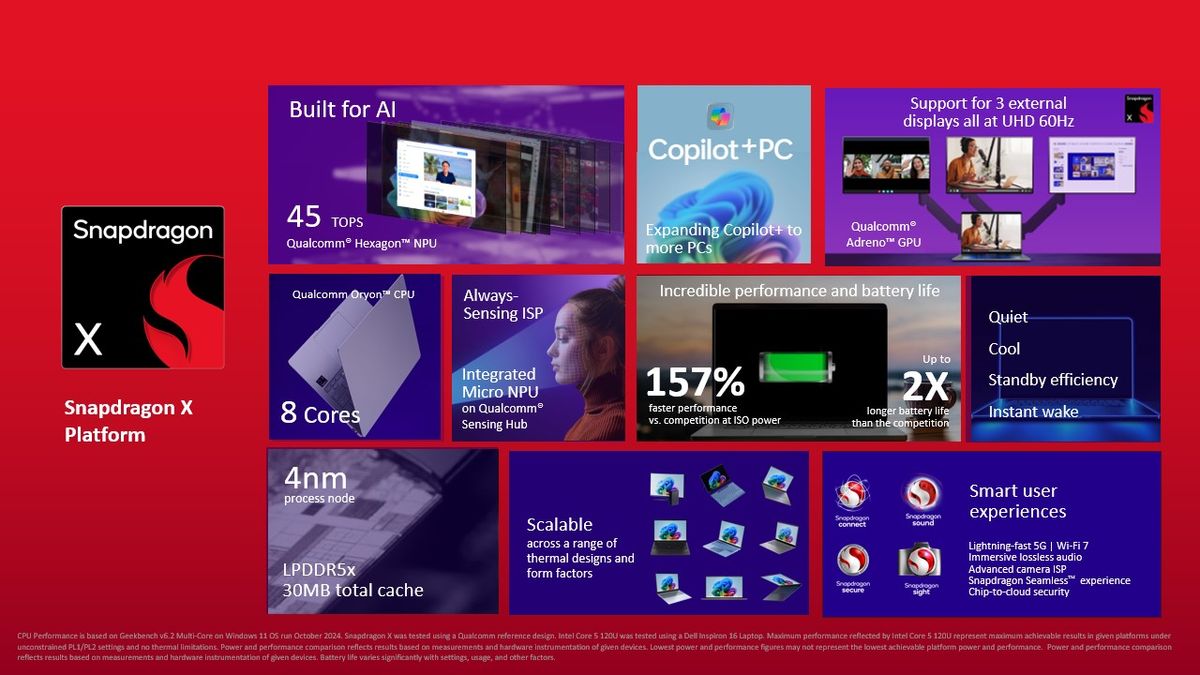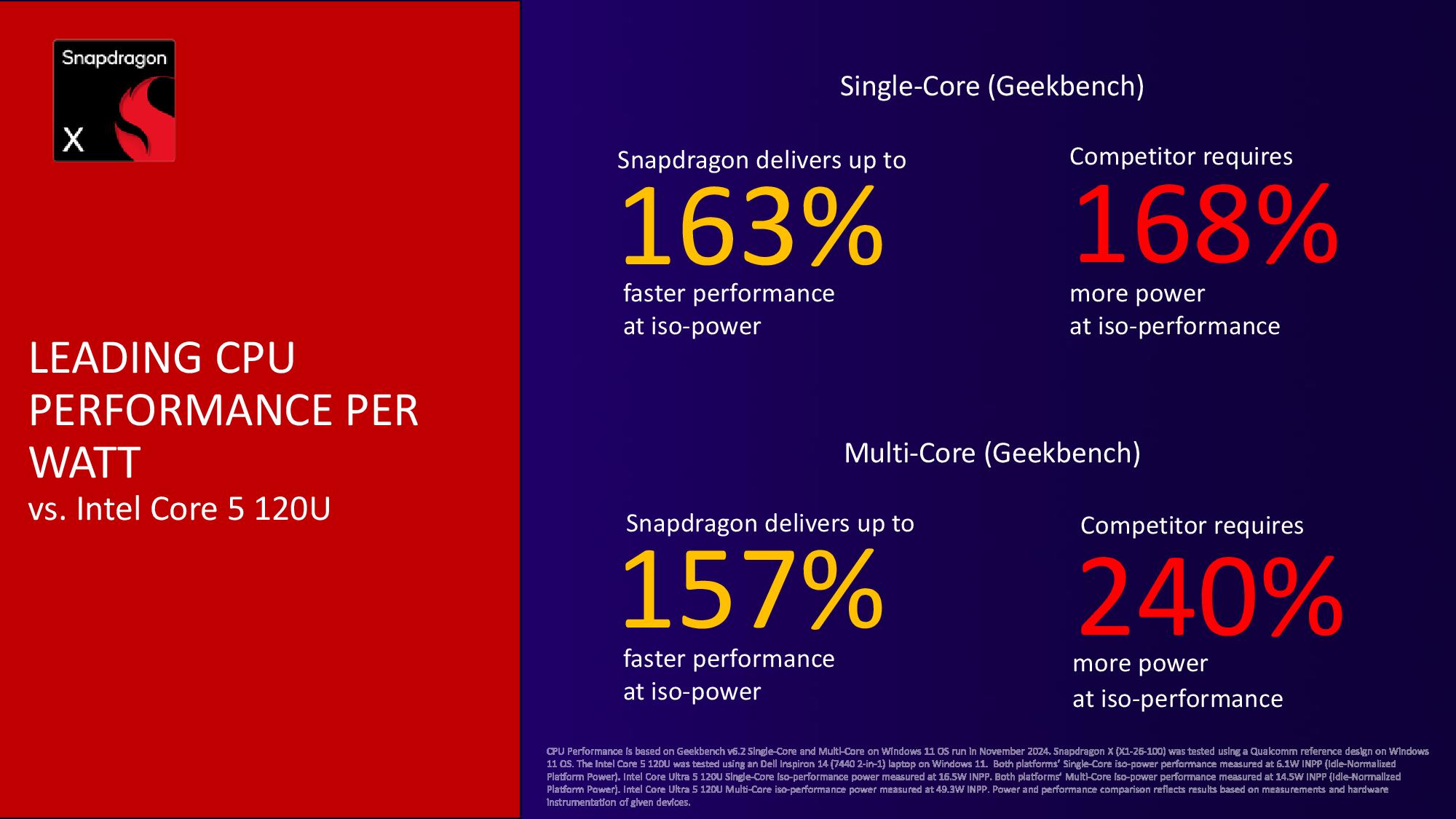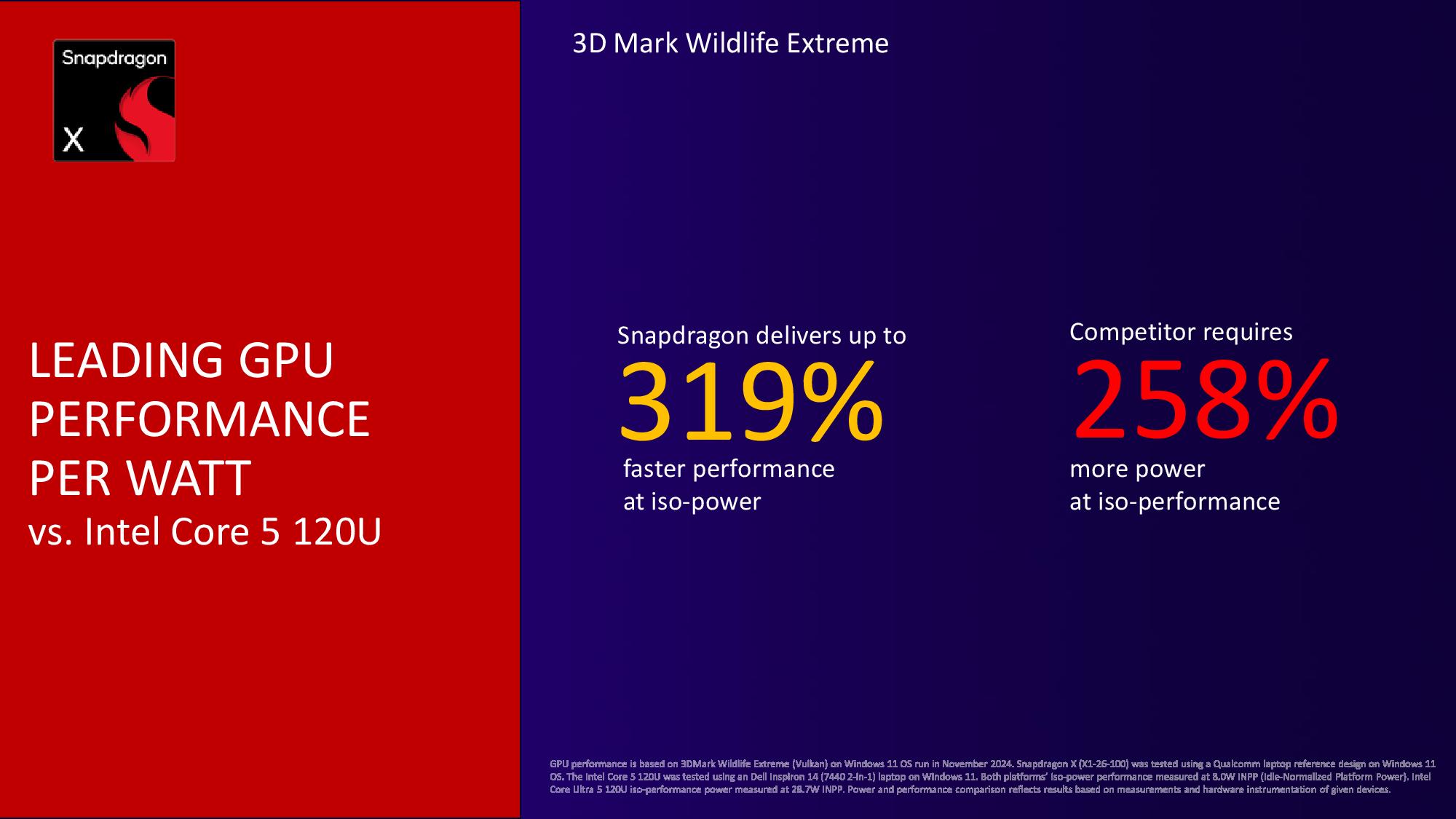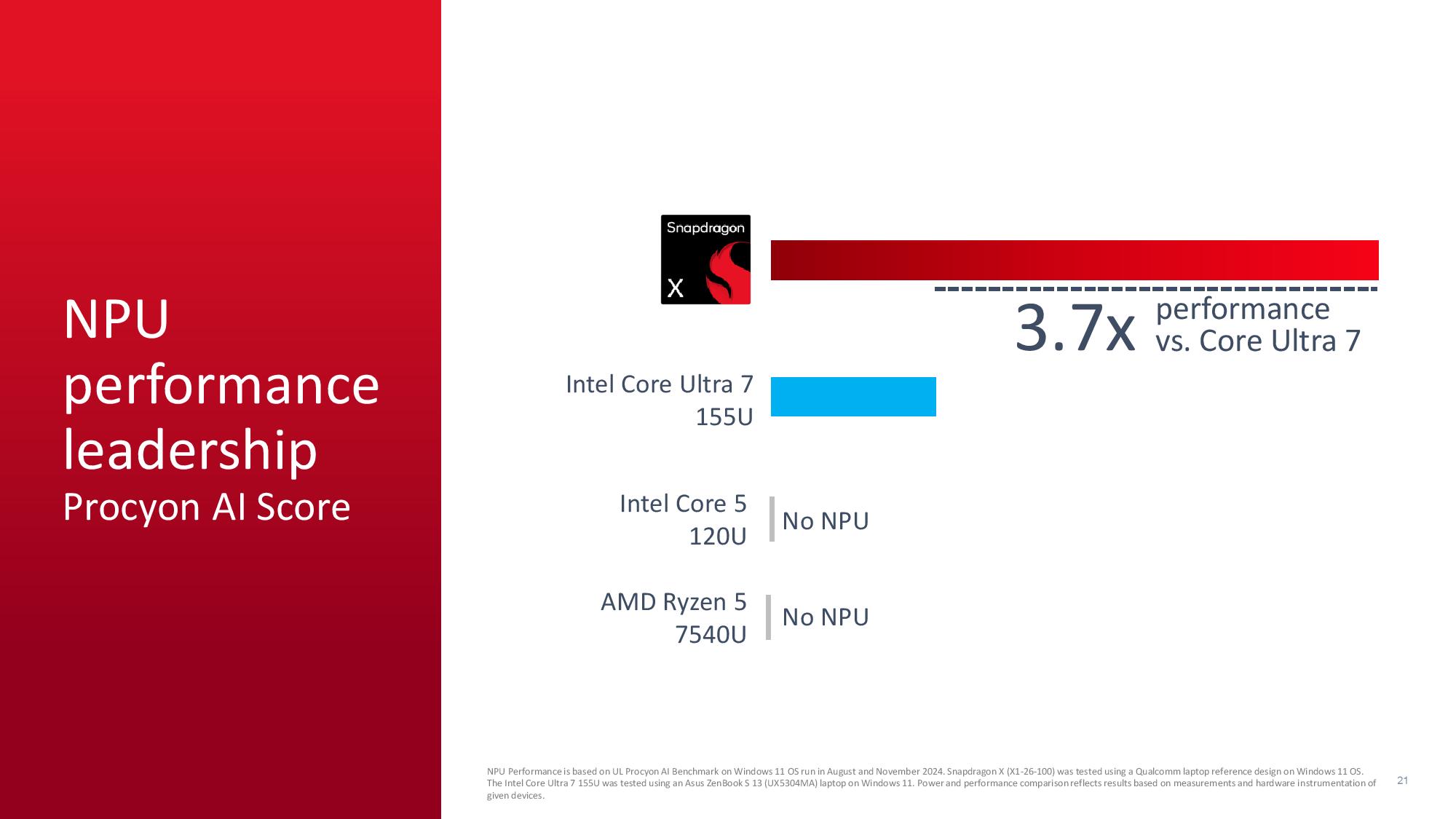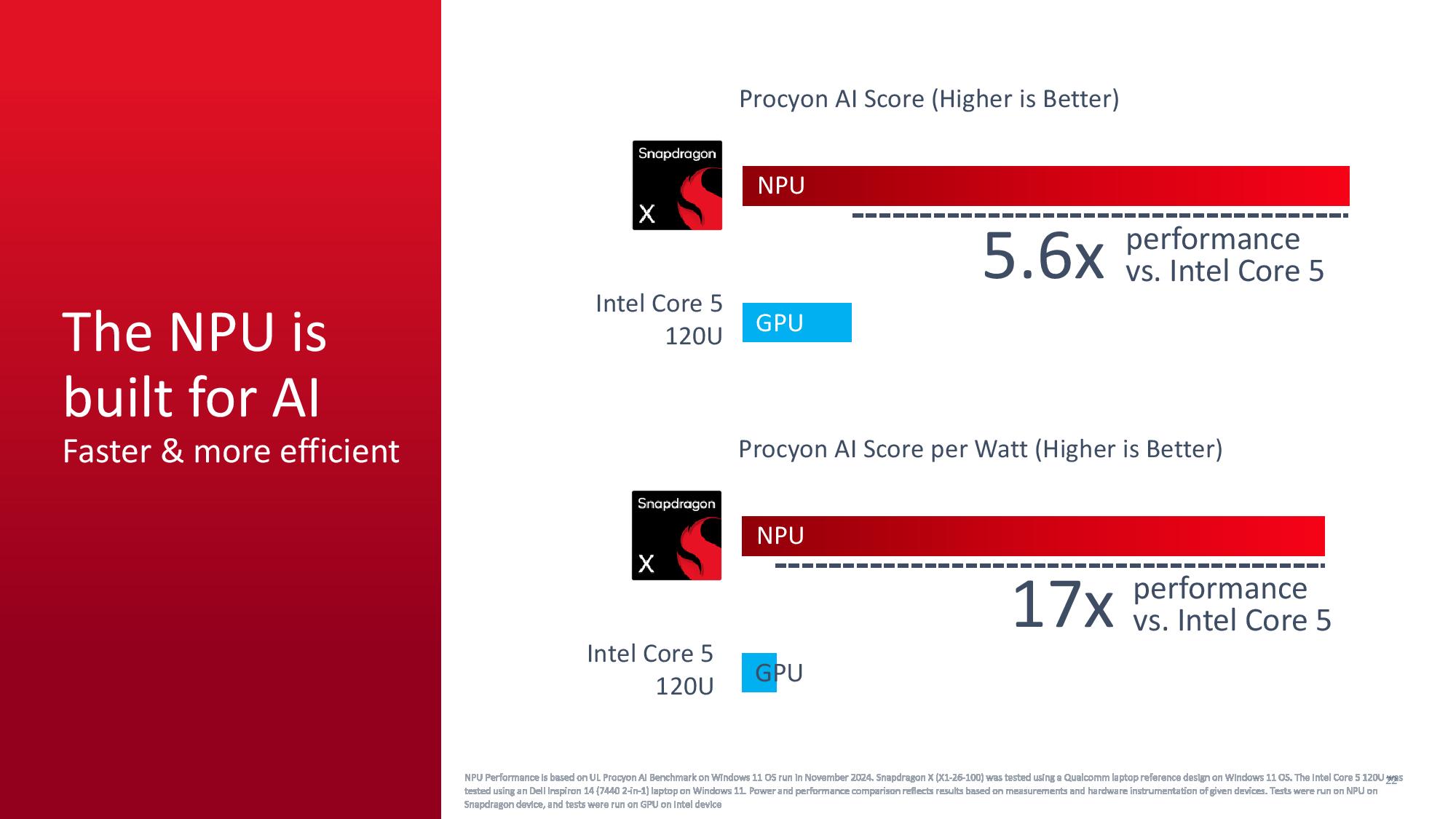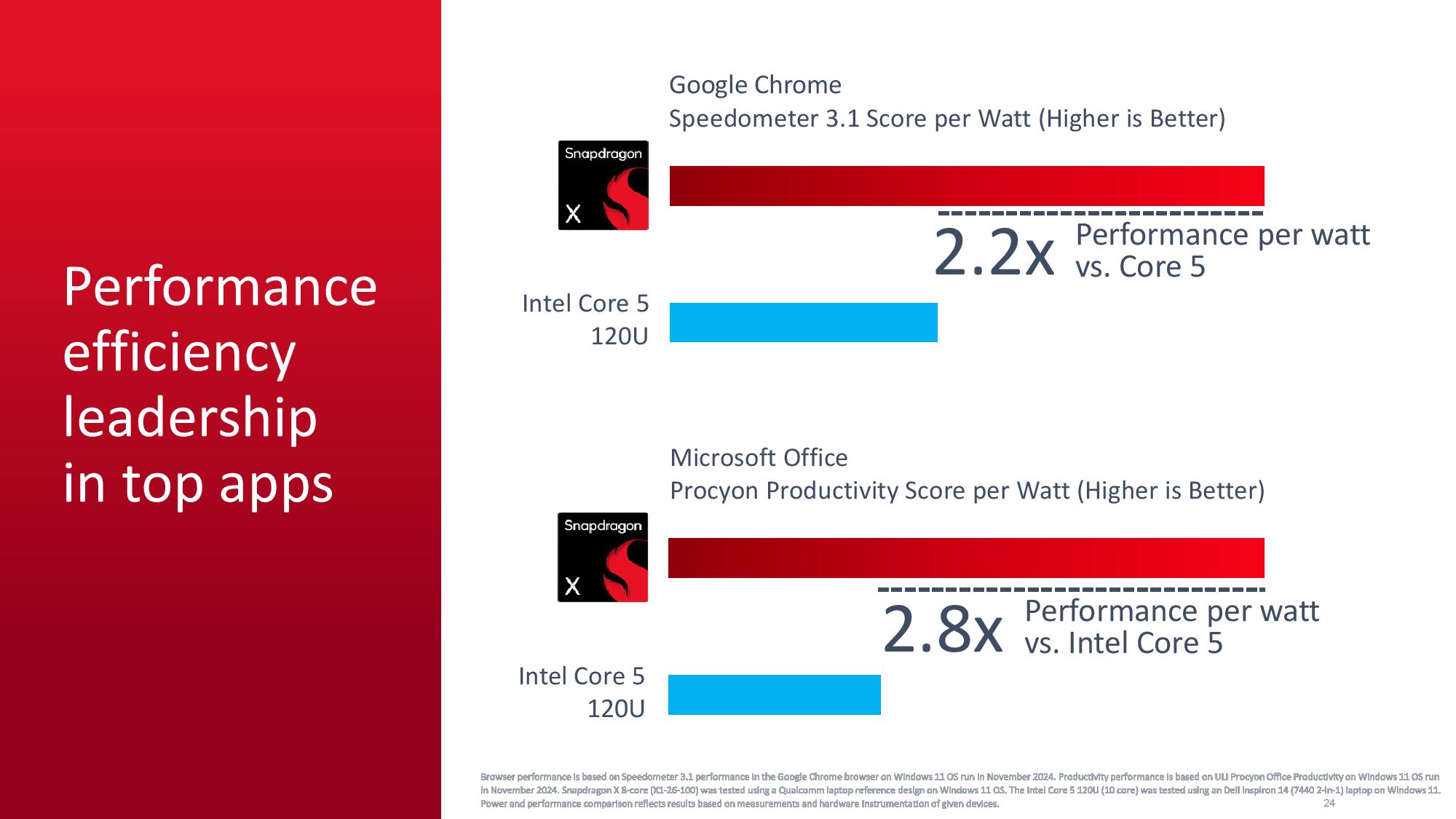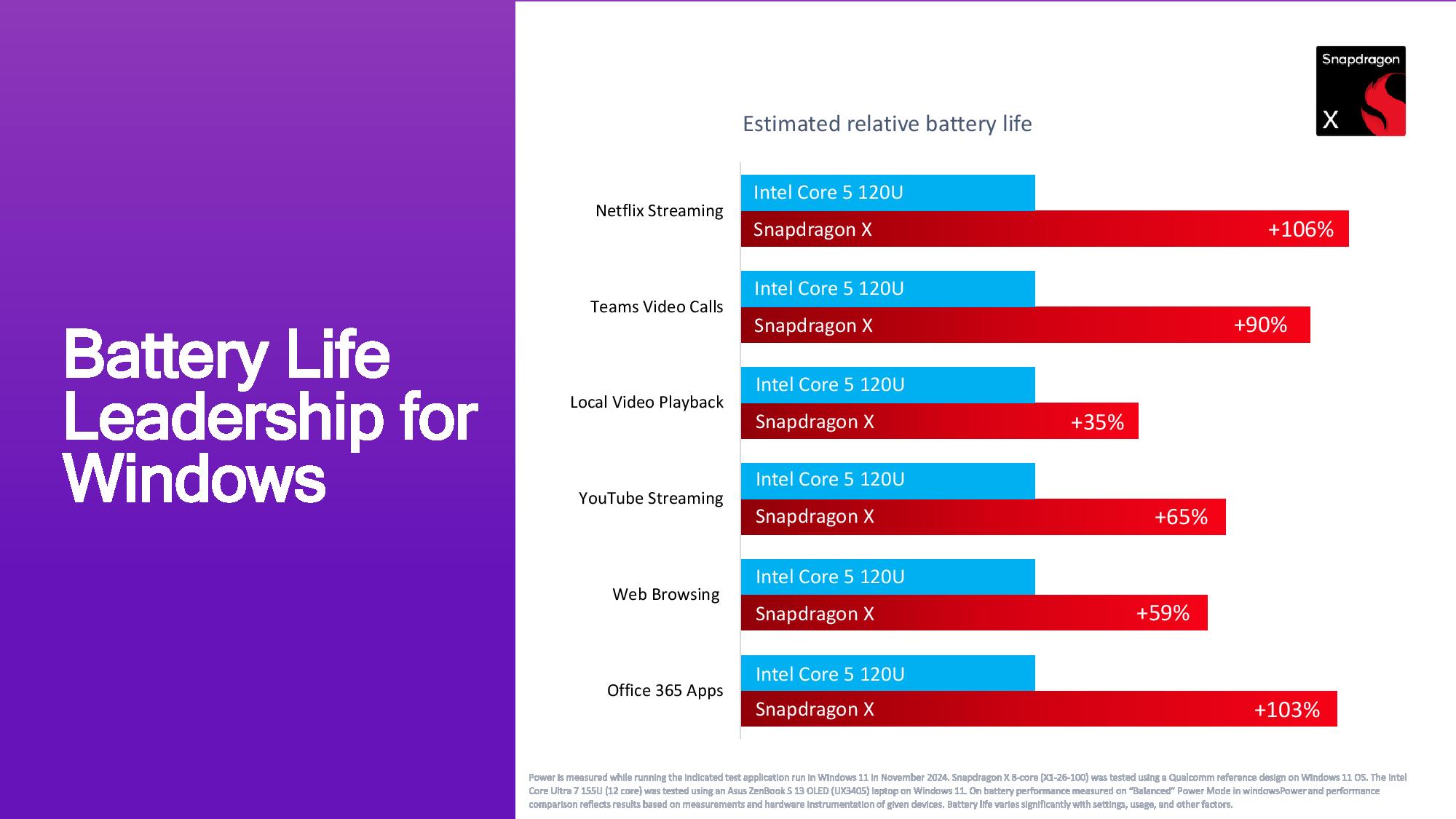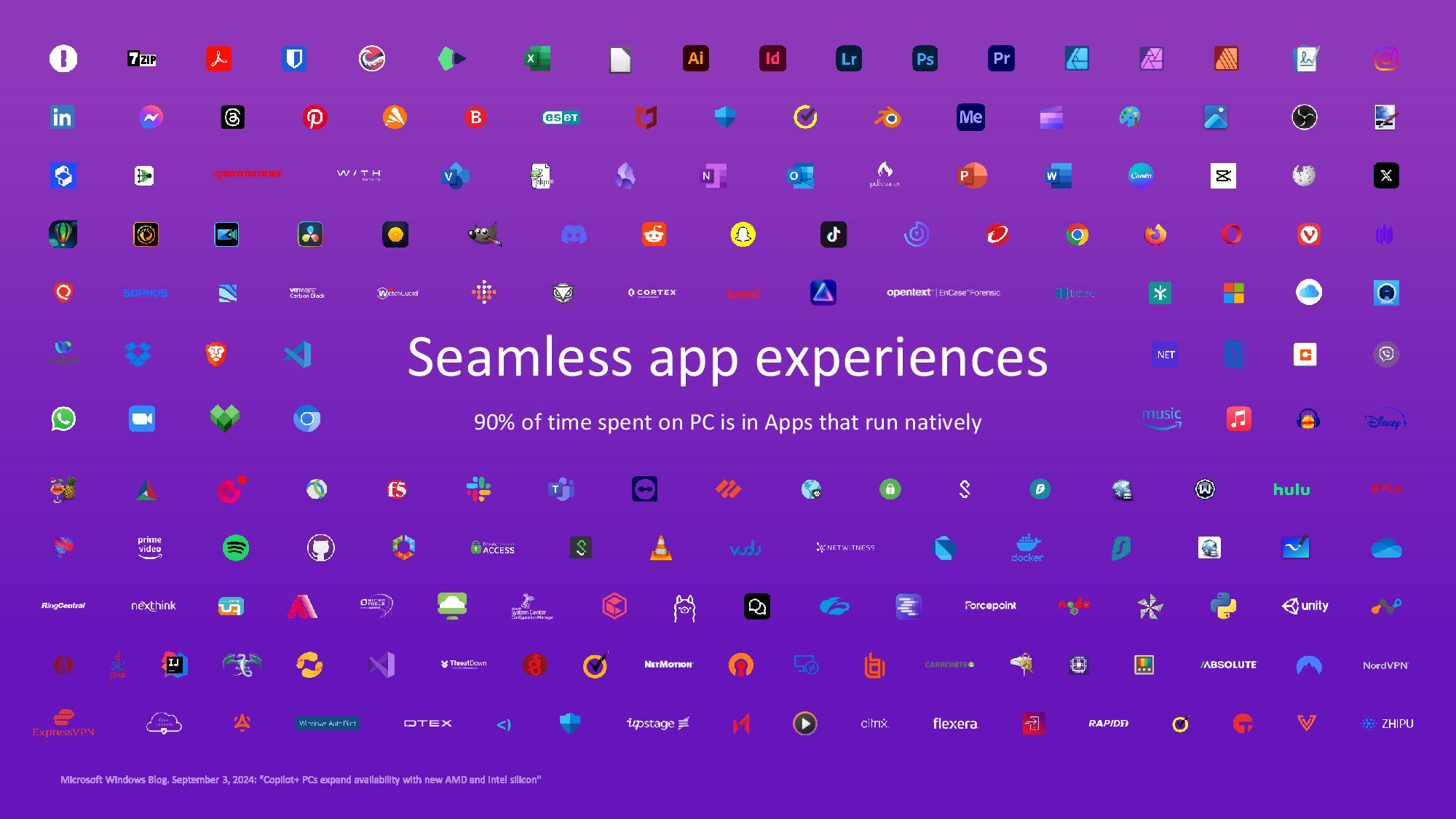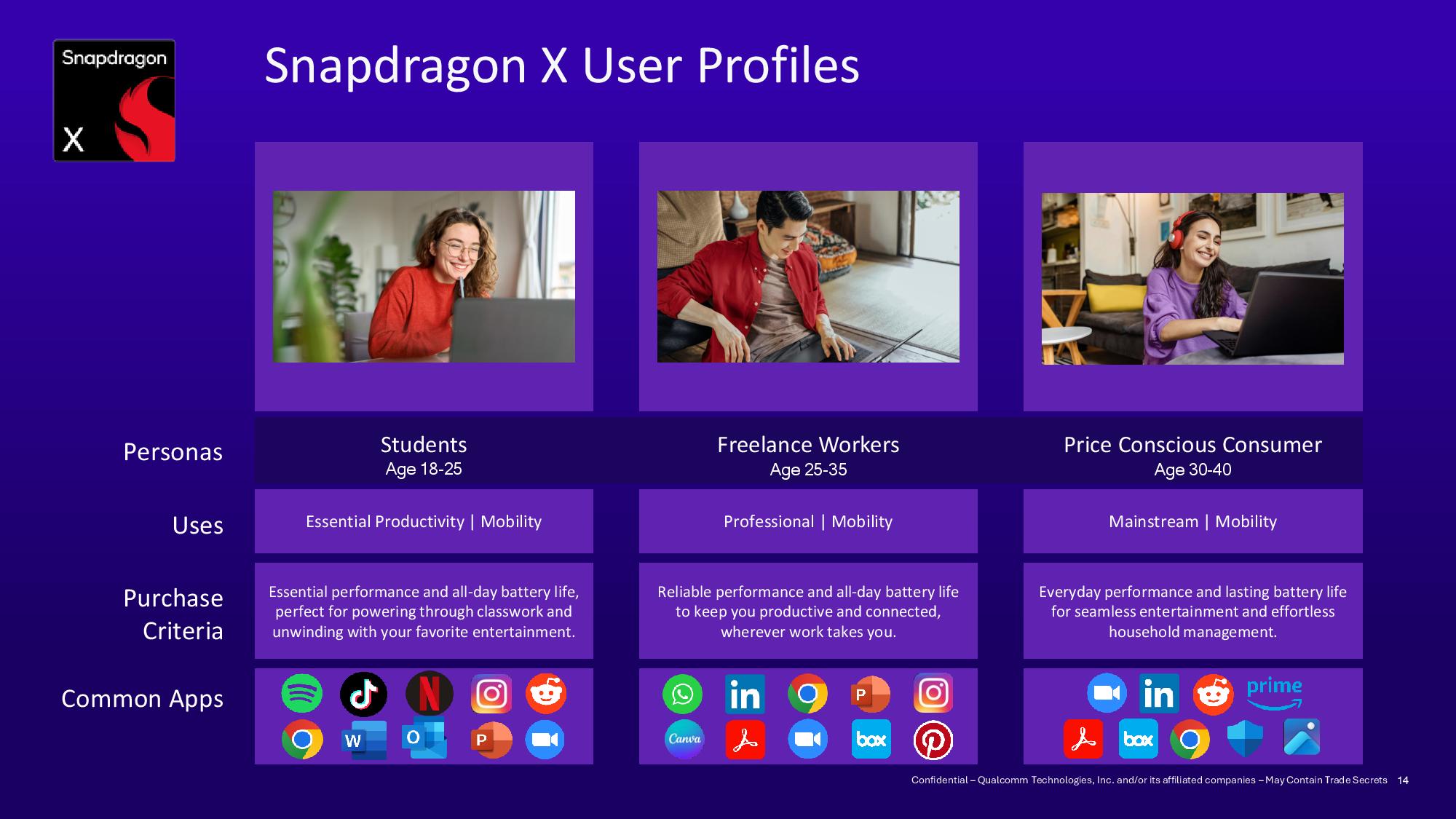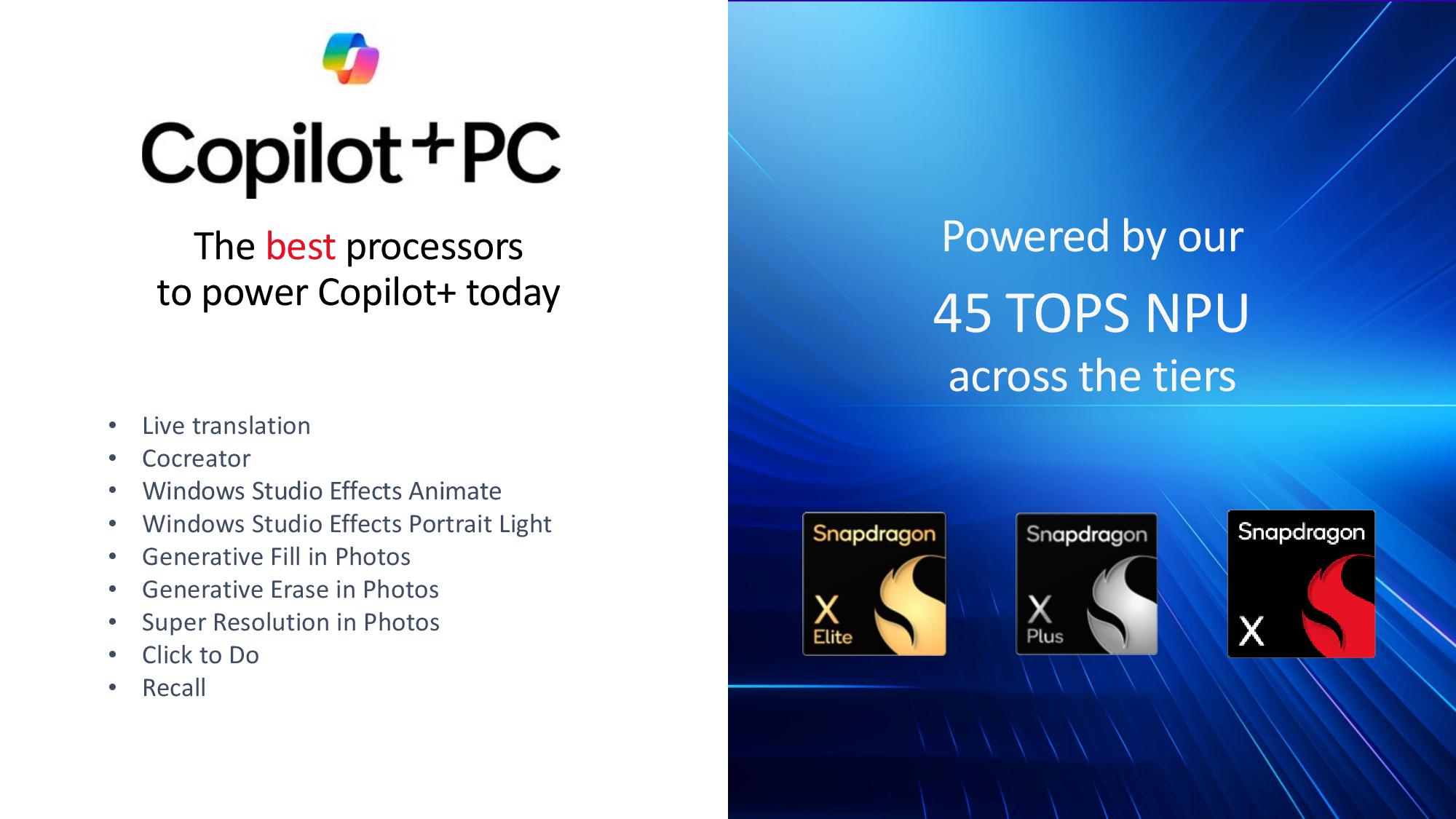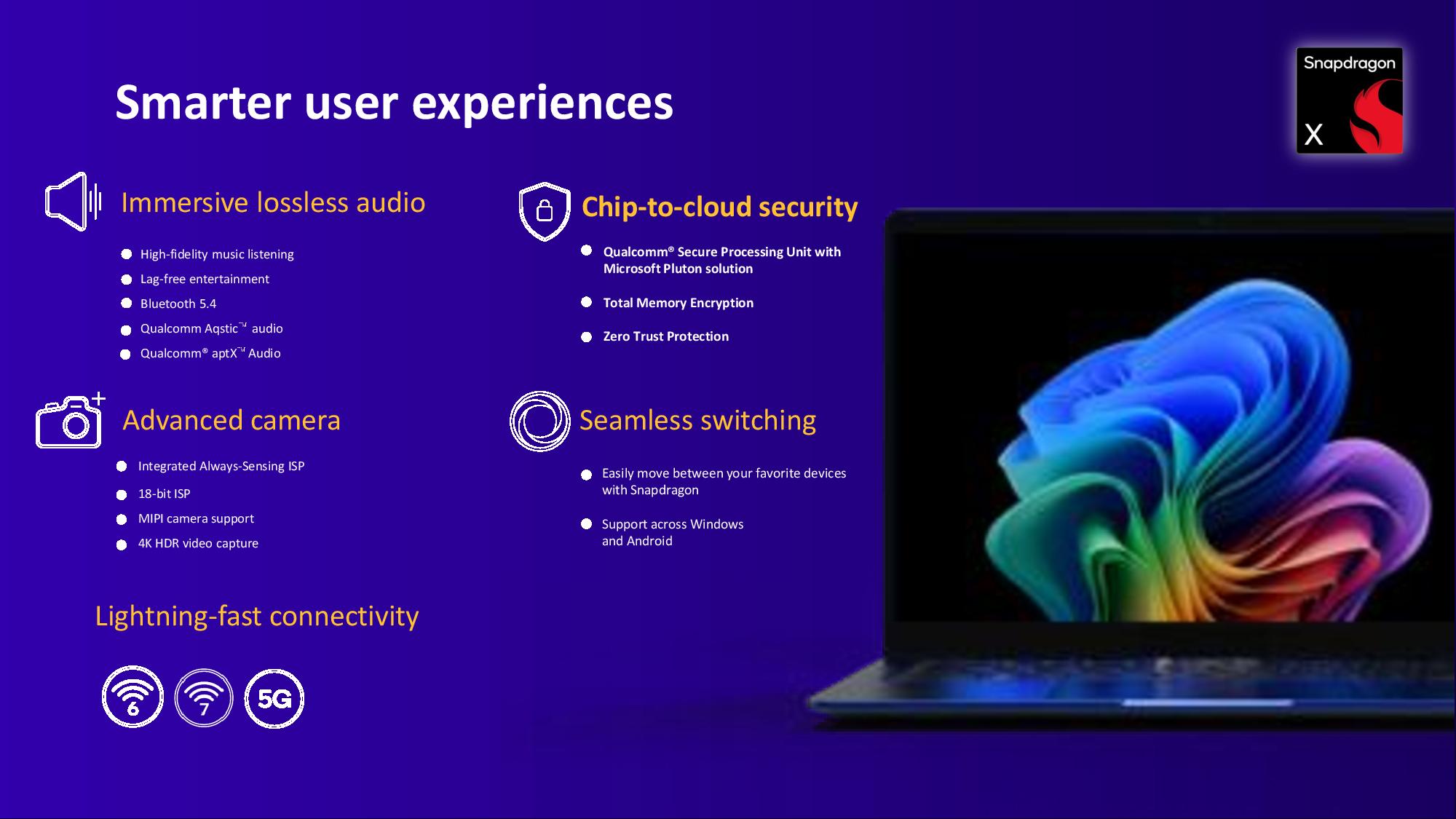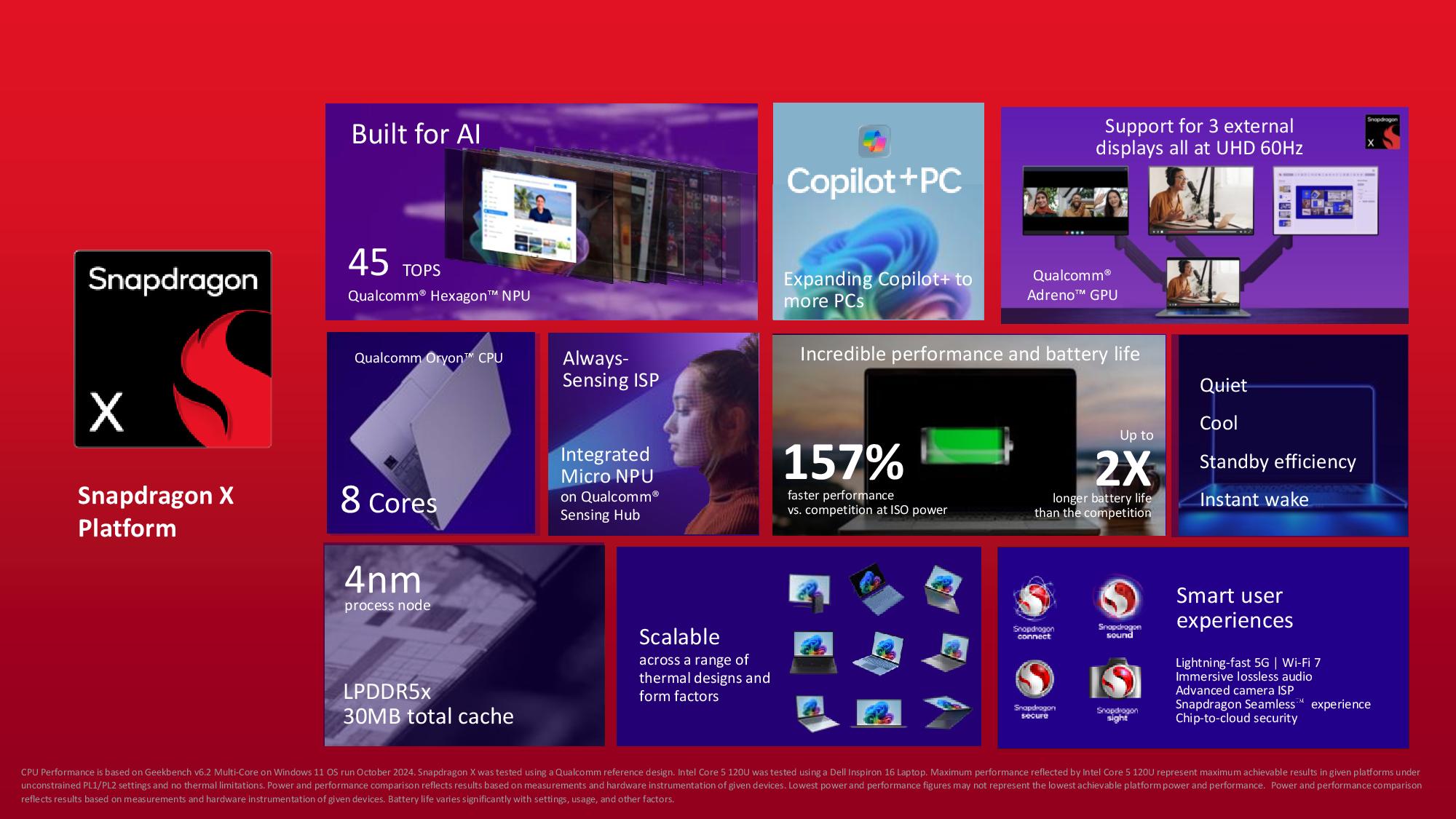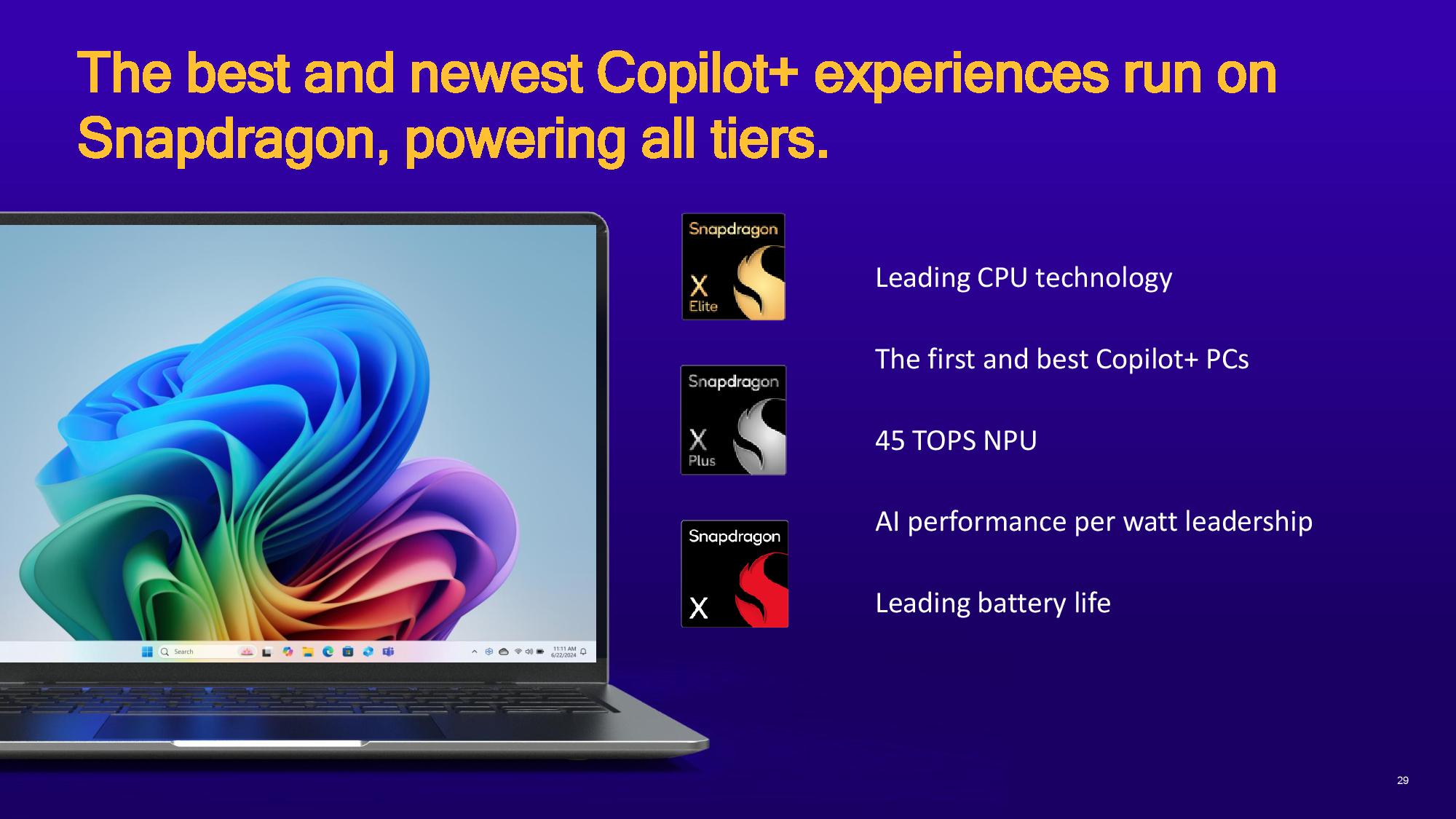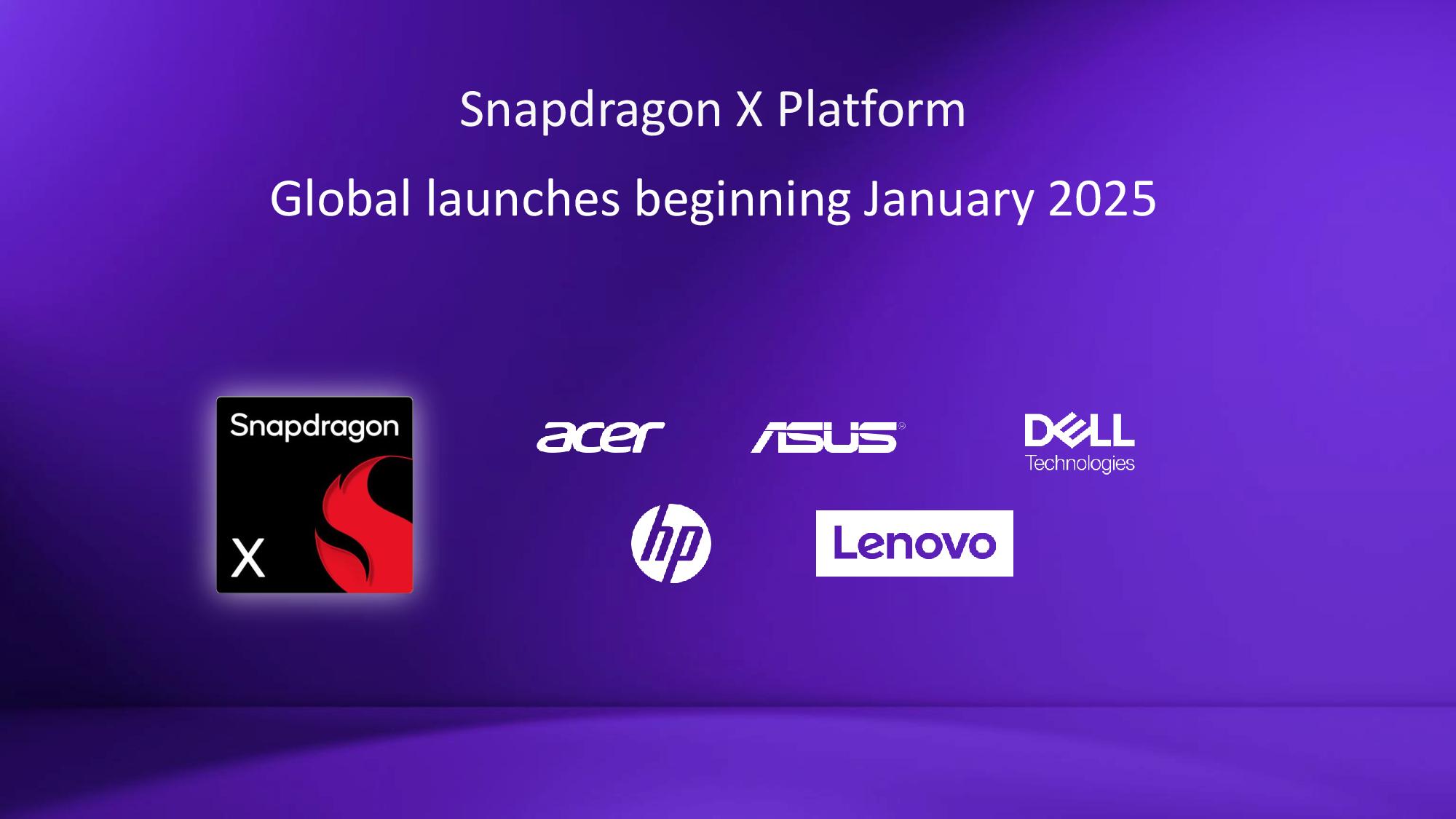Qualcomm launched a new 8-core Snapdragon X model here at CES 2025 in Las Vegas as it looks to reduce the pricing of Arm-based Windows CoPilot+ laptops based on its platform down to the $600 price range to help penetrate the lucrative high-volume mainstream segment of the market. That broadens the company’s approach to the mainstream segment further in the wake of its Snapdragon X Plus chips that brought pricing down to the $799 range. Despite the new chips’ lower price point, the company isn’t skimping on performance; in single- and multi-core Geekbench, Qualcomm claims to offer 163% and 157% faster performance, respectively, at the same power level as a competing Intel chip, or use 168% and 240% less power to deliver the same level of performance. The company also teased that it would announce the world’s first Snapdragon mini desktop PCs tomorrow.
The launch comes as Qualcomm fights to gain more market share in the PC market from x86 industry stalwarts Intel and AMD with its Windows laptops, a task that, given recent market share reports, will require both an extended period of time and a broader range of price points. However, the company says it is off to a solid start, with Snapdragon processors comprising 95% of the shipping Windows CoPilot+ PCs, with sales in 20 countries addressing over 60% of the total addressable Windows market.
The Qualcomm X1-26-100 slots in as the lowest-tier ‘Snapdragon X’ model, joining the other three platforms already available, like the Snapdragon X Elite and Snapdragon X Plus. The chip is an eight-core processor fabbed on the TSMC 4nm process node that boosts up to 3.0 GHz in all-core workloads, with the slightly lower CPU clock speed being the key differentiator compared to the 8-core Snapdragon X Plus processors. The chip wields 30MB of total cache and delivers up to 1.7 TFLOPS of performance from the Adreno GPU, with up to 45 TOPS of performance coming from the AI-focused Hexagon Neural Processing Unit (NPU). The processor supports LPDDR5x-8448 memory that provides up to 135 GB/s of
memory throughput across a 16-bit memory bus. Qualcomm says it has five laptop OEMs, including Dell and Lenovo, bringing new notebooks to market with the chip under the hood.
| Header Cell – Column 0 | Snapdragon X | Snapdragon X Plus | Snapdragon X Plus | Snapdragon X Plus | Snapdragon X Plus |
|---|---|---|---|---|---|
| Part Number | X1-26-100 | X1P-42-100 | X1P-46-100 | X1P-64-100 | X1P-66-100 |
| CPU | Qualcomm Oryon, 8 cores, up to 3.0 GHz multi-core, 30MB total cache, no boost | Qualcomm Oryon, 8 cores, up to 3.4 GHz single-core boost / 3.2 GHz multi-core, 30MB total cache, no boost | Qualcomm Oryon, 8 cores, up to 4.0 GHz single-core boost/3.4 GHz multi-core, 30MB total cache | Qualcomm Oryon, 10 cores up to 3.4 GHz, 42MB total cache, no single or dual-core boost | Qualcomm Oryon, 10 cores, up to 4.0 GHz single-core boost/3.4 GHz multi-core, 42MB total cache |
| GPU | Qualcomm Adreno up to 1.7 TFLOPs | Qualcomm Adreno up to 1.7 TFLOPs | Qualcomm Adreno up to 2.1 TFLOPs | Qualcomm Adreno, up to 3.8 TFLOPS | Qualcomm Adreno, up to 3.8 TFLOPS |
| NPU | Qualcomm Hexagon, 45 TOPS | Qualcomm Hexagon, 45 TOPS | Qualcomm Hexagon, 45 TOPS | Qualcomm Hexagon, 45 TOPS | Qualcomm Hexagon, 45 TOPS |
| Process Node | TSMC 4nm | TSMC 4nm | TSMC 4nm | TSMC 4nm | TSMC 4nm |
| Memory | Up to 64GB LPDDR5x-8448 | Up to 64GB LPDDR5x-8448 | Up to 64GB LPDDR5x-8448 | Up to 64GB LPDDR5x-8448 | Up to 64GB LPDDR5x-8448 |
| Camera | Qualcomm Spectra ISP, up to 36MP single camera, 4K HDR video capture | Qualcomm Spectra ISP, up to 36MP single camera, 4K HDR video capture | Qualcomm Spectra ISP, up to 36MP single camera, 4K HDR video capture | Qualcomm Spectra ISP, UP to 64MP single camera, Dual camera 2x 36 MP, 4K HDR video capture | Qualcomm Spectra ISP, UP to 64MP single camera, Dual camera 2x 36 MP, 4K HDR video capture |
| Cellular Modem | Snapdragon X65 5G | Snapdragon X65 5G | Snapdragon X65 5G | Snapdragon X65 5G | Snapdragon X65 5G |
| Wi-Fi and Bluetooth | Qualcomm FastConnect 7800; Wi-Fi 6, 6E, 7, up to Bluetooth 5.4 | Qualcomm FastConnect 7800; Wi-Fi 6, 6E, 7, up to Bluetooth 5.4 | Qualcomm FastConnect 7800; Wi-Fi 6, 6E, 7, up to Bluetooth 5.4 | Qualcomm FastConnect 7800; Wi-Fi 6, 6E, 7, up to Bluetooth 5.4 | Qualcomm FastConnect 7800; Wi-Fi 6, 6E, 7, up to Bluetooth 5.4 |
Qualcomm and Intel have been engaged in a tit-for-tat benchmark war, and today’s launch is no exception. Qualcomm claims that Snapdragon X outperforms Intel’s 10-core Core 5 120U in the 3DMark Wildlife Extreme GPU benchmark by 319% at the same power level, and that the Intel chip requires 258% more power to deliver the same level of performance. Notably, this synthetic benchmark often doesn’t correlate directly to real-world gaming performance, and Snapdragon PC chips have struggled with teething issues with many games that aren’t yet optimized for Arm-based processors. That means that Intel holds the compatibility lead in gaming.
Qualcomm also says its chip outperforms the 120U by 2.2X in performance per watt in the web browser benchmark Speedometer, and by 2.8X the performance per watt in the Procyon productivity suite, which encompasses performance in a range of office applications. Battery life is the key selling point of the Arm-powered Snapdragon platform, and Qualcomm says it delivers anywhere from 35% to 106% more battery life than a Core 5 120U-equipped laptop in a range of benchmarks, including streaming, web browsing, office applications, and Teams video calls.
Being a CoPilot+ PC platform, AI is also a central focus of Qualcomm’s performance claims, including a claimed 5.6X advantage in the Procyon AI Score and a whopping 17X advantage in performance-per-watt during the test. That’s possible because Snapdragon X uses its power-efficient NPU for AI tasks while the Intel processor relies upon the decidedly less performant and efficient integrated GPU. As highlighted in another slide, Intel’s 120U and AMD’s Ryzen 5 7540U, the latter of which was curiously left out of Qualcomm’s other benchmarks (Qualcomm clearly has Intel in the crosshairs), don’t have an NPU that can run the Procyon AI test.
Leading performance and battery life in any given laptop price tier is usually a winning combination, but the advancement of the Arm-compatible software ecosystem looms large as Qualcomm’s primary barrier to wider adoption. In partnerships with Microsoft and a wide range of ISVs ,Qualcomm is working to defray compatibility concerns and ensure that applications not only run on Arm, but that they also run at their full performance potential. To that end, the company says that it has expanded the roster of Arm-native applications to include 20 of the top VPNs, 50 of the top security and cloud applications, along with new music Digital Audio Workstations (DAW) and Virtual Studio Technology (VST) applications. The company also now has 50 native NPU-powered applications that look to capitalize on the AI potential of CoPilot+ PCs.
The Snapdragon X platform will launch globally beginning in January 2025, and as you’d imagine, we’ll have systems in for review in short order.

